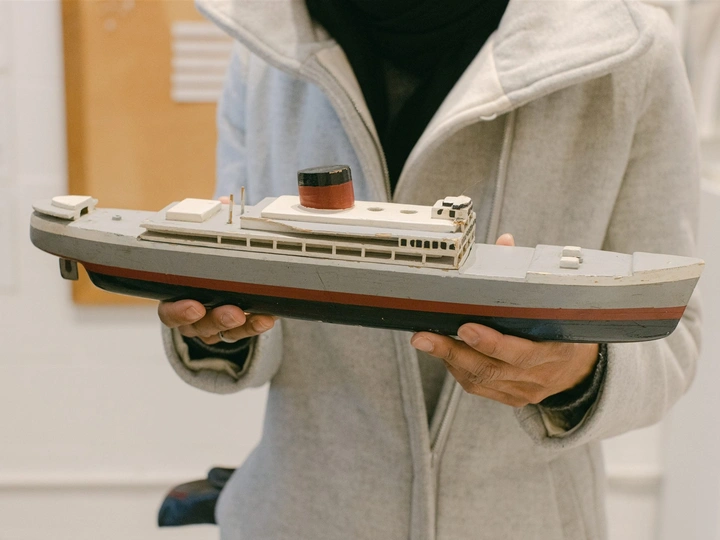The Grief Gallery: Make Space for Eco-Grief

Originally from NYC, Charlene Lam is a Lisbon-based artist, curator and the founder of The Grief Gallery.
The Grief Gallery presents international exhibitions, installations and events about grief and loss, often featuring meaningful objects and the belongings of loved ones lost. Featured projects include activations in New York City (NYCxDESIGN), London (London Design Festival), Toronto (DesignTO), Los Angeles (End Well) and Lisbon.
After independent curator Charlene Lam lost her mother suddenly in 2013, she leaned into her creativity and curatorial instincts to guide herself through grief. Faced with the impossible task of emptying out her mother’s dream house, she asked herself:
“If I was to curate an exhibition about my mother, which 100 objects would I choose?”
That question was the key to making progress with her mom’s belongings, moving through her grief and moving forward with her own life. It was also the seed for The Grief Gallery, with the first exhibition incorporating her mom’s belongings taking place in London in 2015. As a grief coach, she developed her Curating Grief framework to help individuals process grief in a creative, accessible way.
She is the star of the new short film Curating Grief: Loss and Objects, directed and produced by London-based filmmaker Jamie Max Lee.
Her work has been exhibited at apexart (New York, NY), the Brooklyn Museum (Brooklyn, NY), Bildmuseet (Sweden), the Museum of Craft and Folk Art (San Francisco, CA), and Studio 1.1 (London, UK).
Residencies include the DesignTO x Fieldwork Design Residency and the PAUSE Starlight Residency for BIPOC practitioners in the grief and end-of-life space.
Media mentions include Azure magazine (Canada), Dezeen (UK), British Vogue (UK), Architectural Digest (US), and Time Out London (UK).
“The mourning of the loss of ecosystems, landscapes, species and ways of life is likely to become a more frequent experience around the world.”
This assertion in the paper “Ecological Grief as a Response to Environmental Change: A Mental Health Risk or Functional Response?” in the International Journal of Environmental Research and Public Health is the basis for this proposal for climate grief editions of The Grief Gallery’s installations.
It is vital to make space for grief. Grief is the natural response to loss – and thus a natural part of our human lives. But too often, our societies, cultures and built environments don’t offer the opportunity for us to acknowledge and process grief.
As a creative platform, The Grief Gallery is designed to make space for grief and to invite visitors to engage with the topic of loss in an accessible way.
At The Grief Gallery’s events, visitors and community members are welcome to bring objects and stories to share — stories that matter to them, no matter how seemingly insignificant they are to anyone else. At exhibitions and events from Los Angeles to Lisbon, individuals mourn their loss of connection with loved ones, their heritage and the world as they knew it.
I propose pop-up installations of The Grief Gallery at environmental conferences and gatherings, and in community settings, throughout Europe.
With a traveling exhibition about eco-anxiety and climate grief, featuring meaningful objects that prompt reflections and storytelling, visitors will be invited to name the climate anxiety and eco-grief they may be feeling, in both individual interactions with the curator and invigilators, and in community at scheduled events.
“The psychological toll of climate change tends to be invisible — one reason why it has been neglected,” an April 2024 editorial in the journal Nature notes. Let’s take this opportunity to make eco-grief visible.